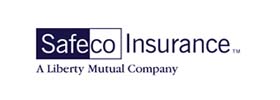
5 tips to help you lower your monthly mortgage payment
CNN — Mortgage Payment
Having a smaller monthly mortgage payment is helpful in all sorts of ways. Not only does a smaller payment mean having to spend less money each month on your home, but a large mortgage payment can make it more difficult to cover your everyday expenses or to save money for retirement, family vacations or a rainy day.
Many lenders also want borrowers to have a debt-to-income ratio below 43%. This means that, generally speaking, all your monthly debt payments need to make up no more than 43% of your gross monthly income. A smaller mortgage payment makes it easier to reach this benchmark.
So, if you want to secure a lower mortgage payment on a home you’re looking to buy, or if you want a lower monthly payment on a home you already own, how can you do it? Fortunately, there are quite a few ways to accomplish this goal. Here are five of the easiest ways to lower your mortgage payment, some of which can lead to considerable savings over the long term.
1. Extend the length of your mortgage to lower the Mortgage Payment
If you already own a home with a monthly mortgage payment you’d like to lower, one strategy is to extend the length of your mortgage term. This is generally done by refinancing your home to pay off the existing mortgage with a brand-new one.
When you refinance, there are two ways to lengthen your mortgage. One is to simply start your mortgage again from the beginning, but another option is to change your loan repayment terms altogether.
Let’s say you’re currently seven years into a 30-year mortgage. If you refinance whatever principal is left on your current mortgage into a new 30-year mortgage, your monthly payments will drop because you’re now spreading out the payments across a new 30-year period and at the same time starting with a lower principal since you’ve already paid off a portion of the original mortgage.
Or, if you currently have a 15-year mortgage, you could refinance into a new 20-year or 30-year home loan, thus lengthening your loan term and spreading your payments out over a longer timeline.
How much can you lower your payment by extending your home loan? While the specifics will vary depending on your circumstances, a borrower who just started a 15-year mortgage for $250,000 with a fixed APR of 4% would fork over $1,849 per month in principal and interest. If that person switched to a 30-year home loan with the same APR, their payment would drop to $1,194 per month.
2. Refinance to get a lower interest rate
Click here for the rest of the story



























































